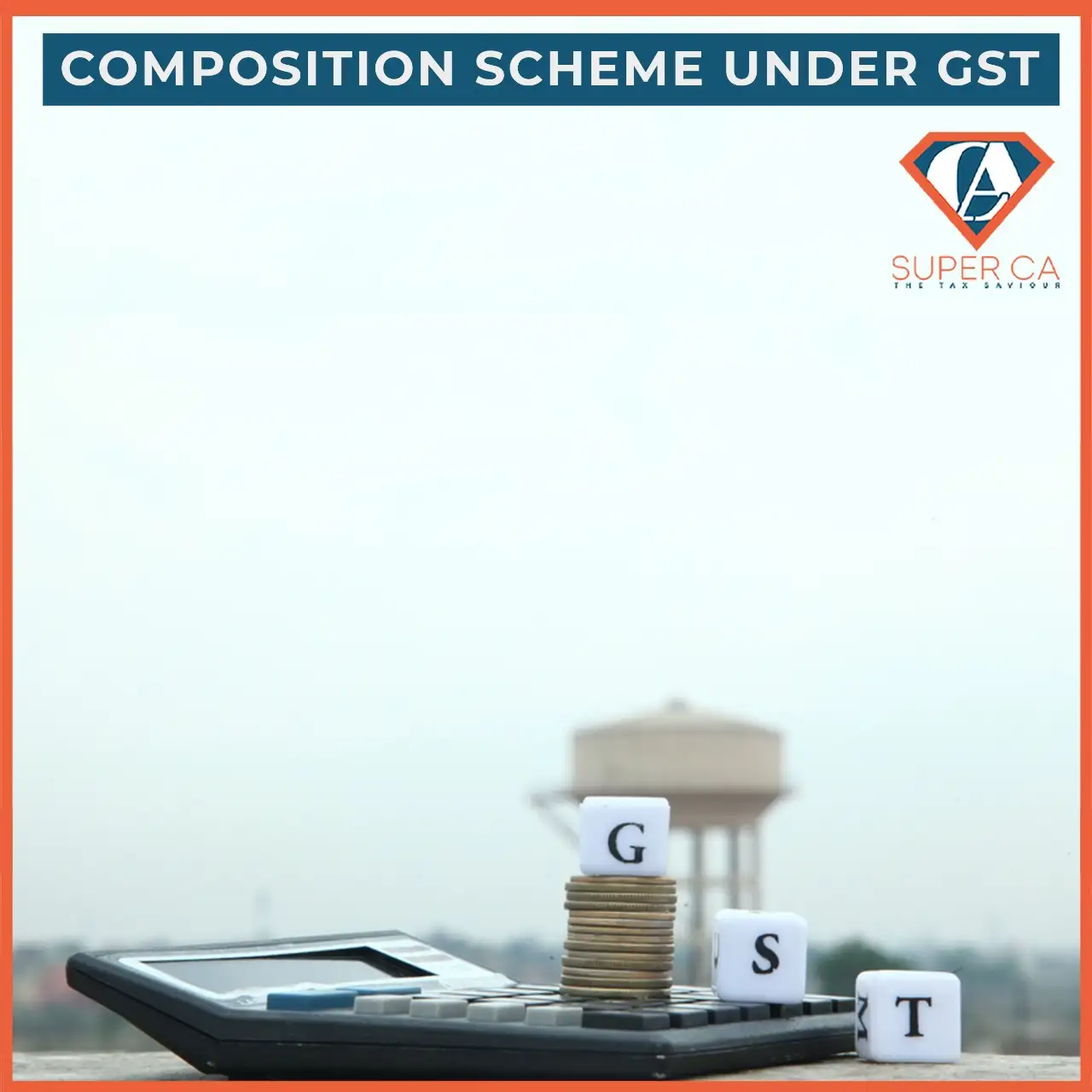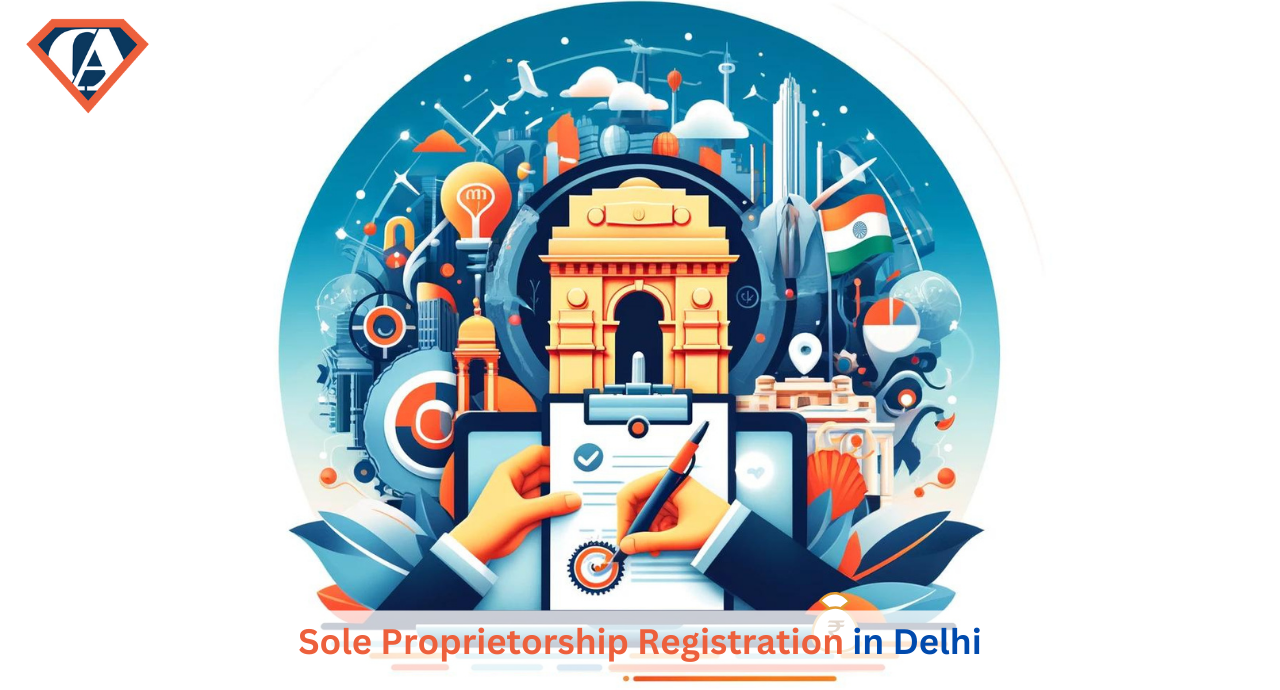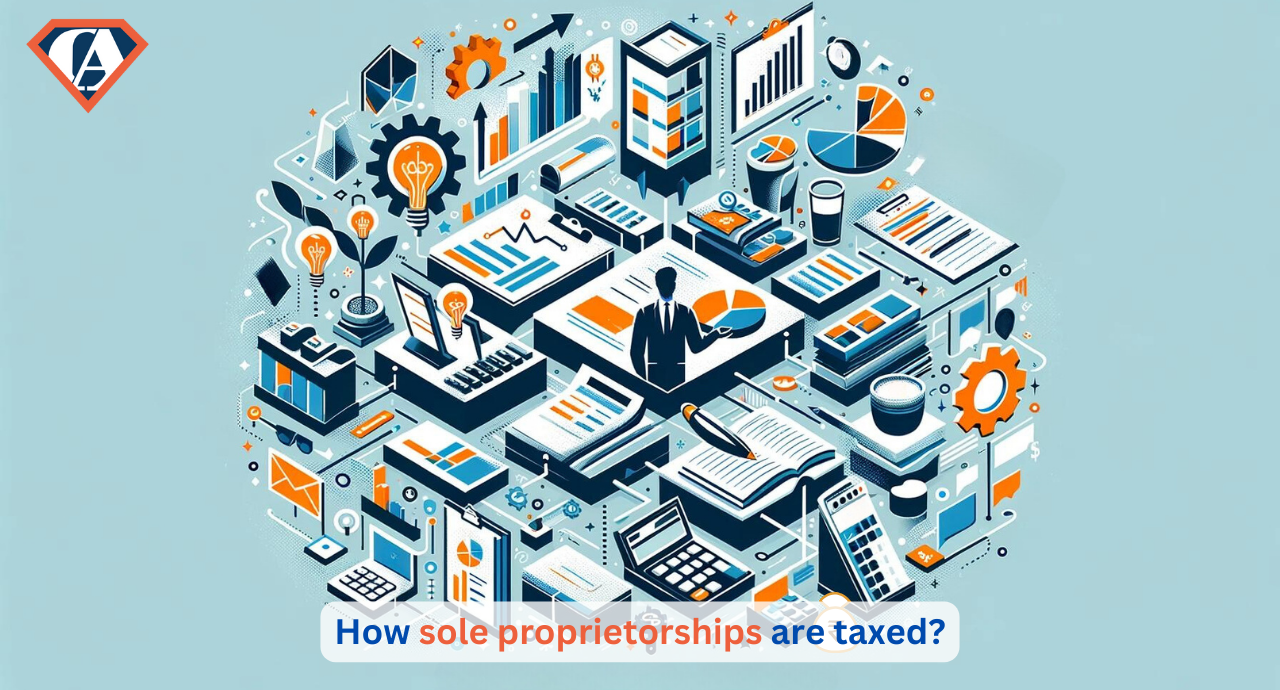Composition Scheme under GST
- Posted By SuperCA
- On 30 March

Composition Scheme under GST
About
In the initial phase of implementation of GST, many businessmen had to face difficulties in filing GST returns every month. In order to eliminate these difficulties, the government brought the GST Composition Scheme in order to make the GST system workable. With this system, the work of the business class has been made much easier.
Let's know what benefits will be received from GST Composition Scheme:
What is “Composition Scheme”?
GST Composition Scheme is a system that has been introduced to provide relief to the small scale businessmen in the tax system and to ease their difficulties.
In this system, there is a fixed rate of tax, lump sum tax payment and only one return in three months. Whereas earlier traders had to upload three returns every month, lots of transaction receipts on the computer and due to all the technical difficulties, the business class had to face problems. But the tax system has been easy after the implementation of this Scheme.
Who all can take Advantage of this Scheme?
To overcome all the complexities of the GST tax system, the Government of India has given an option to small businesses to adopt composition schemes. In GST, the annual income of the trader under the Composite Scheme should be more than 40 lakhs or less than 1.5 crore. But for the northeastern states, this limit has been kept at Rs 75 lakh. However, you can join the regular plan whenever you want.
It is to be noted, that the states in the Northeast, which are exempted from the ability to take composition schemes, include these states, such as Arunachal Pradesh, Assam, Manipur, Meghalaya, Mizoram, Nagaland, Sikkim, Tripura and Himachal Pradesh. They come under the purview of the Special Economic Zone.
People who cannot opt for Composition Scheme
To get registered in the Composition Scheme, the total turnover of a person should be more than 40 lakhs or less than 1.5 crore. However, some taxpayers will not be eligible to get registered in GST structure scheme even if the turnover is less than 1.5 crore.
If you fall in any of the below categories, then you cannot avail GST structure scheme: -
➤ People who do businesses of “GST exempted goods.”
➤ Those who sell their goods with the help of e-commerce.
➤ Contingent taxable person (who stays at a place for some time and to do business.)
➤ Non-resident taxable person (who is not a citizen of India, but does business in India.)
➤ Businessmen from one state to another.
➤ Manufacturers of tobacco, pan masala, and ice cream-related goods.
Conditions for availing GST Composition Scheme
Under the Goods and Services Tax system, the registered person has to fulfill the following conditions in order to select the composition scheme.
➤No input tax credit can be claimed by the dealer opting for the composition scheme.
➤Dealers cannot supply goods exempted from GST.
➤Under the reverse charge mechanism, the taxpayer has to pay tax at normal rates for the transaction.
➤If a taxable person has different segments of businesses (eg cloth, electronic goods, groceries etc.) under the same PAN number, then he has to collectively register all such businesses under the composition scheme.
➤The taxpayer will be required to mention the words taxable person (s) first on each notice or signboard prominently displayed at the place of business.
➤The taxpayer has to mention the written taxable person words on each bill of supply issued by him.
➤As per the CGST (Amendment) Act, 2018, a manufacturer or businessman can now trade up to ten percent or supply up to Rs 5 lakh, whichever is higher.
How to get registered in GST composition scheme?
You may be knowing that you can get registered under GST. But with the help of the composition scheme in GST, you can register very easily under the Goods and Services Tax system. To opt for the composition scheme a taxpayer has to file GST CMP-02 with the government which can be done online by logging into GST portal.
But remember, you will not be able to choose this option in the middle of the financial year.
GST returns to be filed by a Composition Dealer
A composite dealer has to file a quarterly return CMP-08 by 18th of the month following the quarter.
In addition to this, the dealer has to file an annual return GSTR-4 by 30th April of the next year.
GST rates for Composition Dealer
Under Goods and Services Tax, the following types of GST rates have been set on dealers falling within the composition scheme. You can see it in the list shown below.
|
Type of Business |
CGST |
SGST |
Total |
|
Manufacturer and Traders (Goods) |
0.5% |
0.5% |
1.0% |
|
Restaurants not serving alcohols |
2.5% |
2.5% |
5.0% |
|
Other Service Providers* |
3.0% |
3.0% |
6.0% |
(*In the meeting of the 32nd GST Council, it is proposed to include service providers under the composition scheme in line with the above scheme, however, no notification has been issued in this regard.)
Benefits of Composition Scheme
Many facilities have been provided to the traders by adopting the GST composition scheme. Following benefits are shown below on taking GST Composition Scheme.
Let’s discuss them in detail one by one -
➛ No hassle of uploading the bill.
Businesses registered under the composition scheme are neither required to keep a record (bill) of their sales and purchases nor to upload their receipts along with their returns. In contrast, the general scheme of GST has to give details of all its sales in the form GSTR-1 and upload their receipts every month.
➛ Just filing one return in three months.
Under the general scheme of GST, businessmen are required to file GSTR-1 returns every month. However, these returns will not be filed every month by those taking composition schemes in GST. In addition, they have to fill only one form GSTR 4 every three months. In this quarterly return, they have to provide information about the total transactions, total income, tax liability and GST tax in each quarter. However, people with normal GST with a turnover of less than Rs 1.5 crore are also allowed to fill in Form GSTR 1 once in three months.
➛ Lump-sum Tax and Fixed Rate.
Those taking composition schemes are required to deposit a lump sum GST on the total sales made during the last three months along with their returns. Tax is also to be deposited at a fixed rate. Let us try to understand one by one with the help of some examples below: -
➤Those who manufacture or trade goods will have to pay GST of 1% of their total quarterly sales. And 0.1% will be deposited in the Central Government account as CGST or 0.5% in the State Government account as SGST.
➤Restaurant owners will have to pay GST of 5% of their total quarterly earnings. In which 2.5% will have to be given to the Central Government as CGST or 2.5% to the State Government.
➤If you are in any other service business then you have to pay 6% GST. In which 3% will have to be recorded in the central government account as CGST, plus 3% will be paid to the state government as SGST.
Demerits of Composition Scheme
The GST composition scheme under the Goods and Services Tax system in India has not only advantages but also some disadvantages.
We have tried to explain the following disadvantages one by one in detail below.
➛Cannot levy GST on sales.
If you are registering yourself under the GST Composite Scheme, you will not have the right to levy GST on the sale of any goods or services. You cannot recover sales of goods by creating a composition based on being a composition dealer. Below you try to understand it by example. Suppose, you are running a restaurant and your business is registered under the GST infrastructure scheme. After this, if a bill of 200 rupees has been made under the service provided to the customer, then you can neither levy a separate GST on it nor any other tax. This is because you have got registered under the composition scheme.
➛Cannot ship to other states.
Goods cannot be sold in other states adopting composition schemes covered under GST tax scheme. If they do so, they will not be considered composite dealers. If a trader with composition scheme goes to sell his goods in another state, then under this he will have to fill the form GSTR-1 (see link above) to be filled under normal GST registration every month accordingly. However, they will be allowed to send goods from another city or state for themselves, and there is no exemption for shipping them either.
➛ Cannot supply goods in the Special Economic Zone.
If a trader is under the composition scheme, he cannot supply his goods to the Special Economic Zone (SEZ) business units, as the supply of SEZs in the GST system is maintained in the system of national state supply (inter-state supply). You can supply goods only in normal GST schemes.
How to get out of GST composition scheme?
If you are registered in the composition scheme and want to get out of it, then you have to apply online form GST CMP 04.
Apart from this, if you do not follow the conditions of the composition scheme, then the appropriate officer can also exit the scheme by issuing notice to you. In this case, you can also be fined by the appropriate officer.
Conclusion!
This scheme has the effect of reducing the burden of tax on small and medium enterprises while also reducing the compliance burden in relation to GST return filing making it a very effective tax collection mechanism. Composition Rules are strict, rigid and to the point for the person to understand and avail the benefits of the Composition Scheme. Therefore, any person who opts for the scheme will be considered as opting for all the places of business, registered under the same PAN.





